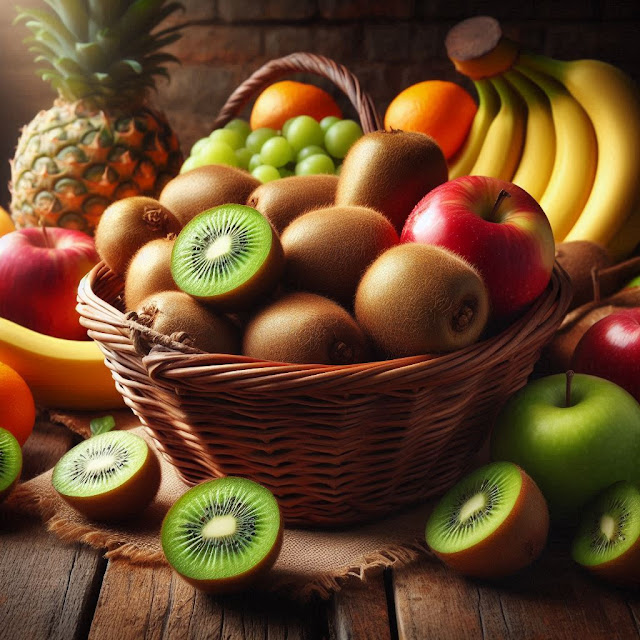Kiwi Storage Tips: The Perfect Way to Keep Your Kiwi Fresh and Tasty
Kiwi is a delicious and nutritious fruit loved by many. It's packed with vitamin C, antioxidants, and dietary fiber, making it a great addition to any diet. However, the key to enjoying kiwi at its best is knowing how to store it properly. Improper storage can result in a mushy, overripe fruit that loses its delightful flavor and texture. In this guide, we'll explore the best kiwi storage methods to keep them fresh for as long as possible, ensuring you can enjoy them at their peak.
1. Kiwi Storage: Room Temperature to Ripen Quickly
When you purchase kiwis, they are often firm and unripe. To ripen them, it's best to store them at room temperature. Place them on your kitchen counter or in a bowl, and they will ripen naturally over the course of 3 to 7 days. The ideal room temperature for ripening kiwi is around 20°C (68°F). Be sure not to place them in an area that is too hot or too cold.
An interesting fact about kiwi is that it releases ethylene gas during ripening, which speeds up the process. So, if you want to ripen your kiwis faster, you can place them with other ethylene-producing fruits like apples or pears. However, keep an eye on them to avoid them becoming too soft or overripe.
2. Kiwi Storage: Refrigeration for Longer Freshness
Once your kiwis are ripe, it's time to refrigerate them to preserve their freshness. Refrigeration slows down the ripening process and helps maintain the kiwi's texture and flavor for up to 2 weeks. When storing ripe kiwis in the fridge, it's best to leave them unpeeled. The skin acts as a protective barrier that helps lock in moisture and prevents the fruit from spoiling too quickly.
Store the kiwis in the fruit drawer of your refrigerator, where the temperature and humidity are consistent. This ensures that the kiwis remain fresh for a longer period. If you have several kiwis, try to separate them from other fruits, as certain fruits, like bananas, can release gases that speed up ripening.
3. Kiwi Storage: Freezing for Long-Term Storage
If you have a large amount of kiwi and want to store it for an extended period, freezing is an excellent option. Frozen kiwi can last for up to 6 months. To freeze kiwis, you should peel them, cut them into slices or cubes, and place them in an airtight container or freezer bag. Make sure to remove as much air as possible to prevent freezer burn.
Frozen kiwi is perfect for smoothies, desserts, or fruit salads. While it may not have the same texture as fresh kiwi after thawing, it still maintains most of its flavor and nutrients. For best results, thaw the kiwi slowly in the fridge, rather than at room temperature, to preserve its taste and texture.
4. Storing Peeled Kiwi: Use Airtight Containers for Freshness
If you've already peeled or sliced your kiwi and want to store it, the best option is to place it in an airtight container. This prevents exposure to air and helps maintain its moisture. However, keep in mind that cut fruit is more susceptible to oxidation, which can affect its color and texture.
To prevent oxidation, you can squeeze a little bit of lemon juice over the cut kiwi. The acid in the lemon helps preserve the color and freshness of the fruit. If you're storing multiple pieces of peeled kiwi, arrange them in a single layer within the container to minimize exposure to air.
5. Key Considerations When Storing Kiwi: Temperature and Moisture Control
Temperature and moisture are critical factors when storing kiwi. Excess moisture can cause kiwi to spoil quickly, while too much warmth can accelerate ripening and lead to mushiness. Therefore, it's important to store kiwis in a cool, dry place with good ventilation. Avoid wet or humid conditions that can cause the fruit to deteriorate faster.
For unripe kiwis, store them at room temperature, and for ripe ones, keep them refrigerated. If you're storing more than a few kiwis, make sure they have enough space in the storage area to prevent them from being squished or exposed to excess air.
6. Additional Tips for Storing Kiwi
-
Always store kiwis with their skin intact. The skin helps protect the fruit from damage and loss of moisture, keeping it fresh longer.
-
Keep kiwis in the fruit drawer of the fridge, where the temperature is more stable.
-
To speed up the ripening process, place kiwis in a bowl with other fruits like apples or bananas.
-
Check your kiwis regularly if stored at room temperature to make sure they don't ripen too quickly and become overripe.
-
For longer storage, freezing is the best option. Frozen kiwi is perfect for smoothies and other recipes, although the texture will change once thawed.
Conclusion: Perfectly Storing Your Kiwi for Maximum Freshness
Knowing how to store kiwi is key to enjoying this nutritious and delicious fruit at its best. By following the right methods, you can ripen your kiwis at room temperature, store them in the fridge for longer freshness, or even freeze them for extended storage. Additionally, using airtight containers and keeping the fruit away from moisture can help maintain its quality. With the right storage techniques, you can enjoy fresh kiwi year-round, whether as a snack, in smoothies, or in your favorite recipes.

Comments
Post a Comment